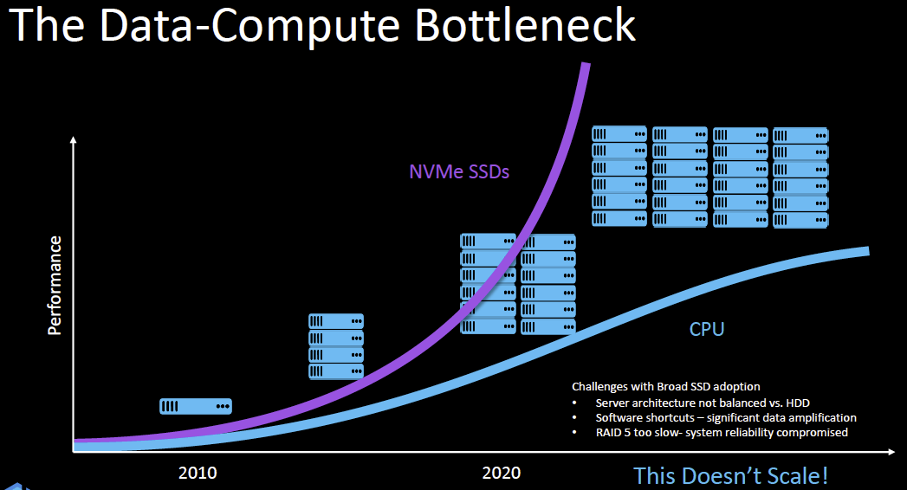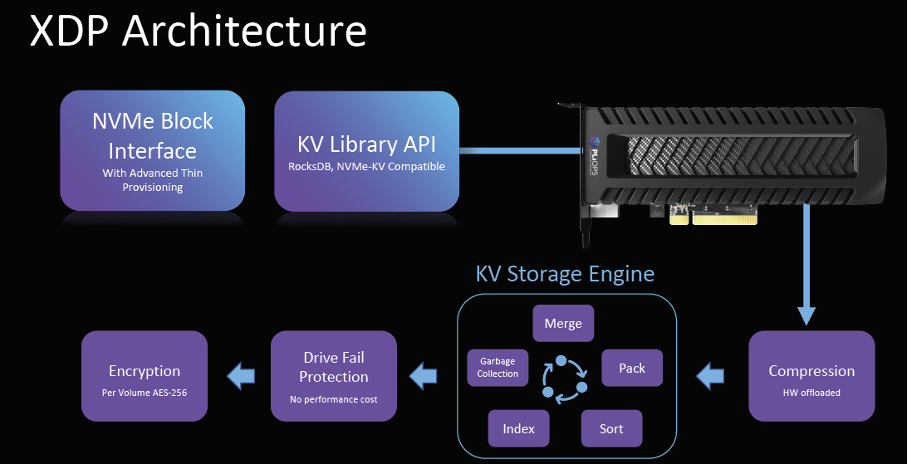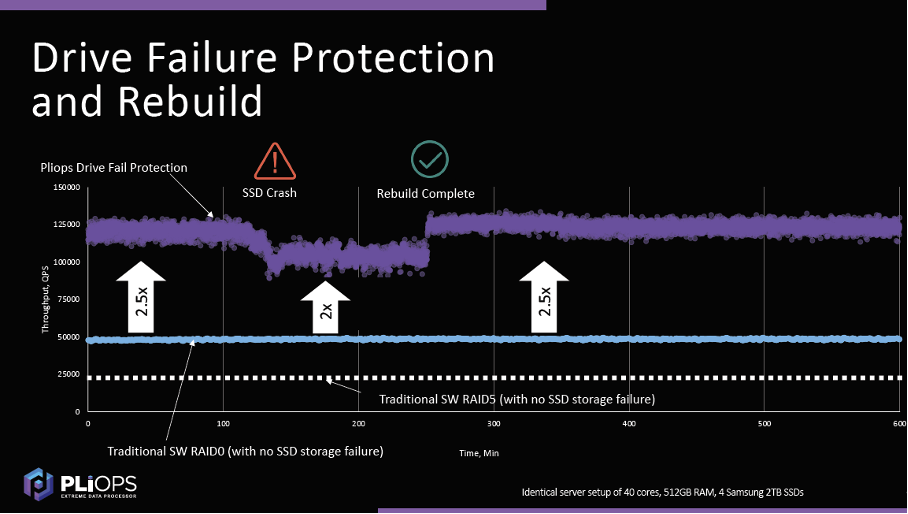Pliops recently announced the general availability of their Extreme Data Processor (XDP). The company presented their solution at Storage Field Day in January 2021, then at Cloud Field Day in June 2021.
More recently, Pliops also showcased XDP in the aptly named Gestalt IT Showcase. In this post, we will cover the challenge that XDP aims to solve, an overview of the technology, as well as the benefits and business outcomes.
The Data-Compute Bottleneck
The Pliops team is composed of industry veterans that came to the same conclusion: there is a growing, irreconcilable gap between compute and storage resources in terms of scalability and performance. In the past decade, flash media has rapidly evolved, offering greater capacities and significantly better performance, generation from generation.
Unfortunately, server architectures are not adequately balanced with flash-based storage: CPU architectures have stagnated, while Moore’s Law has not kept pace. According to Seth Bobroff, Director of Product Marketing at Pliops, by the current trends, the CPU performance now doubles every 20 years (compare that with once every two years).
In short, CPU performance has reached a plateau, and to meet data growth requirements, organizations need to field many more servers to serve modern data processing workloads.

Data Amplification Challenges
Amplification is another major challenge in current SSD storage solutions. It affects read and write operations as well as space usage. For read and write operations, it represents the total set of I/O operations needed to perform a read or write, with the heaviest impact on write operations. Space amplification represents the consumed space to store data vs. the actual dataset size.
Write amplification is perhaps the most problematic with a direct, negative impact on lifespan. Memory cells in SSD drives are prone to wear, therefore SSD drive firmware incorporates mechanisms such as wear leveling to ensure some cells are not overwritten more than others. While data can be written in smaller memory pages, erasure operations happen at the block level (i.e., more pages at once), meaning unnecessary data movements and more wear than originally intended.
The topic would warrant a post on its own, but the outcome is clear: data needs to be processed and optimized before it gets written to flash to avoid the short-term effects (performance decrease) and long-term effects (premature media wear) of non-optimized data operations, especially in I/O intensive systems.
Discovering the Pliops Extreme Data Processor
The Pliops Extreme Data Processor (XDP) is a low-profile PCIe card that improves performance, capacity, efficiency, and reliability across a wide range of applications. The card embeds a powerful XDP chip that provides massive I/O offloading and data optimization capabilities, whose effects cumulate as the application or infrastructure footprint scales.
The solution offers performance improvements ranging from a threefold increase to up to 15 times better results, capacity improvements up to 6x more, significantly improved reliability over traditional RAID, and improved storage efficiency with the ability to use lower-cost QLC and TLC regardless of the workload profile.
But this is not all – one of the key benefits that customers get with Pliops is a dramatically reduced server footprint. Because I/O operations are handled by the XDP, much fewer CPUs are needed. This leads to significant TCO savings and optimized deployments, for example, with a 10:1 reduction on Redis (one server with Pliops XDP can replace 10 non-optimized servers).
How Pliops XDP Works
The Pliops XDP is accessible by applications either as a standard block interface or via a direct Key-Value interface, which is compatible with RocksDB and NVMe-KV standards.
The XDP then proceeds to process and optimize data by:
- Applying hardware compression
- Pre-process the data before I/O is written (merge, pack, sort, index, and perform garbage collection), resulting in compact, optimized data structures
- Encrypt data for security
- Write the optimized, compacted data to SSD

All of these operations are handled while ensuring that data is protected through Pliops proprietary Drive Failure Protection technology. It includes Virtual Hot Capacity space reservation (to cover multiple potential drive failures), onboard, NVRAM-backed data and metadata protection against power failures, rapid recovery (by rebuilding only lost data), and automatic rebuild capabilities, which can resume even after a power loss event.

The solution supports multiple SSD media types (TLC, QLC, ZNS, Optane) that can be accessed through NVMe, NVMe-OF, SAS and SATA (if desired), and a broad ecosystem of SSD vendors such as Samsung, WD, Micron, Intel, Kioxia, SK Hynix, Seagate, and more, providing organizations with ample deployment choices.
Conclusion
The Pliops Extreme Data Processor is a game-changing solution that allows organizations to get immediate, significant business outcomes by massively boosting application performance and dramatically reducing infrastructure costs.
With Pliops XDP, enterprises get:
- 3x to 15x performance improvements
- Data failure protection is 2x better than with RAID 0
- Up to 6x capacity improvements
- Efficient use of low-cost QLC and TLC for any workload
- Massive server footprint reduction
The solution shows tremendous potential not only for enterprises but also for hyperscalers. There, the inherent qualities, breakthroughs, and massive improvements of XDP combined with the astounding deployment scale usher a new era for data processing in public clouds, bringing forth benefits to both consumers and cloud operators.
Watch this Gestalt IT Showcase with Pliops to learn more about their XDP and all of its capabilities.




